The BRAWL² Tournament Challenge has been announced!
It starts May 12, and ends Oct 17. Let's see what you got!
https://polycount.com/discussion/237047/the-brawl²-tournament
It starts May 12, and ends Oct 17. Let's see what you got!
https://polycount.com/discussion/237047/the-brawl²-tournament
[WIP] Two-Story House - Environment
Hi everyone!
I'm an aspiring environment artist. I decided to share the process of creating a new work for my portfolio. The main goal of the project is to gain experience in environment creation and level layout.
The project is a two-story house inspired by the houses from the Hillcrest chapter of The last of us 2 and the interior spaces from Resident Evil games - especially the opening house in RE8
Exterior
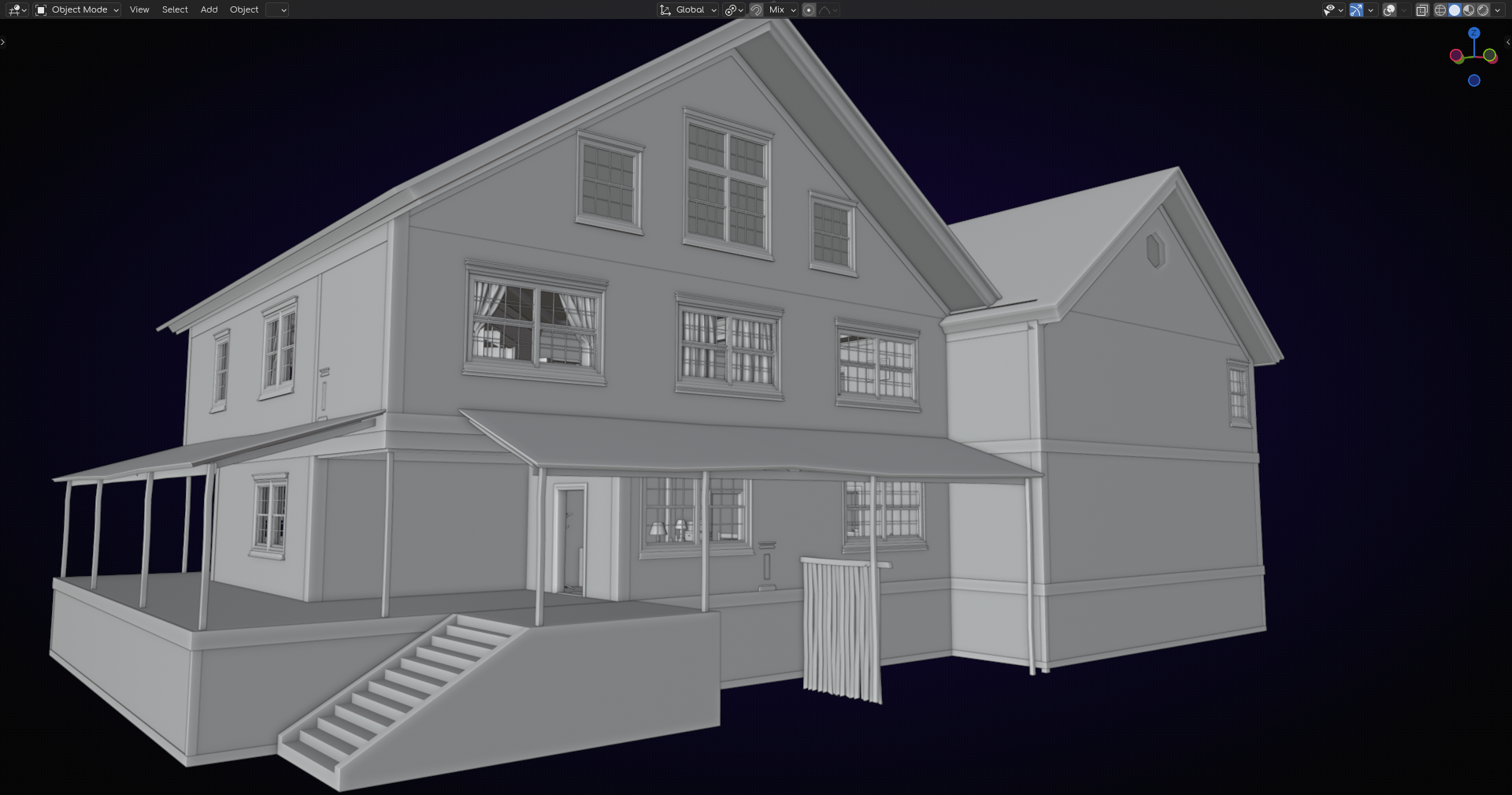
Exterior

Second floor
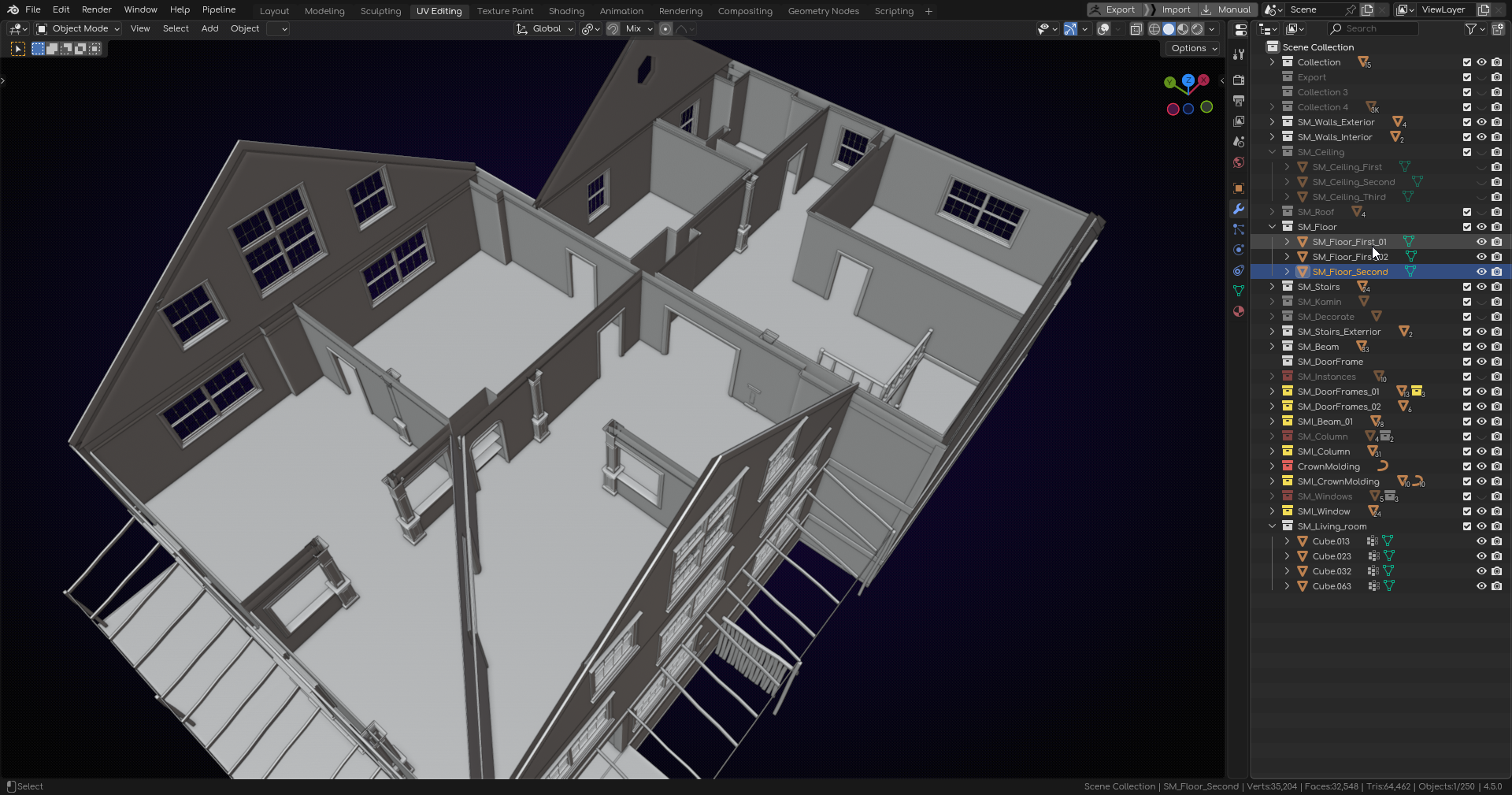
First floor
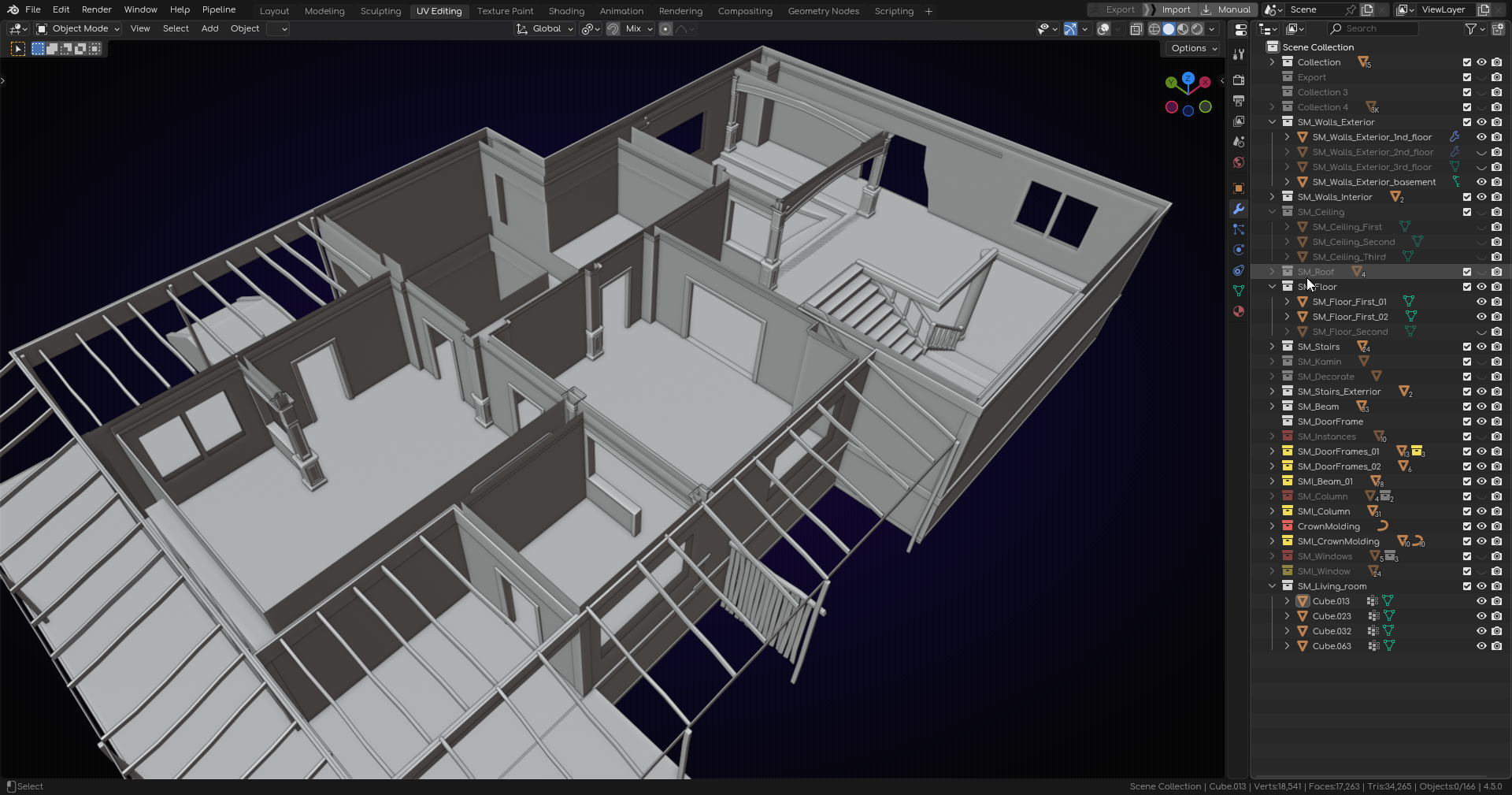
Some images of the blockout
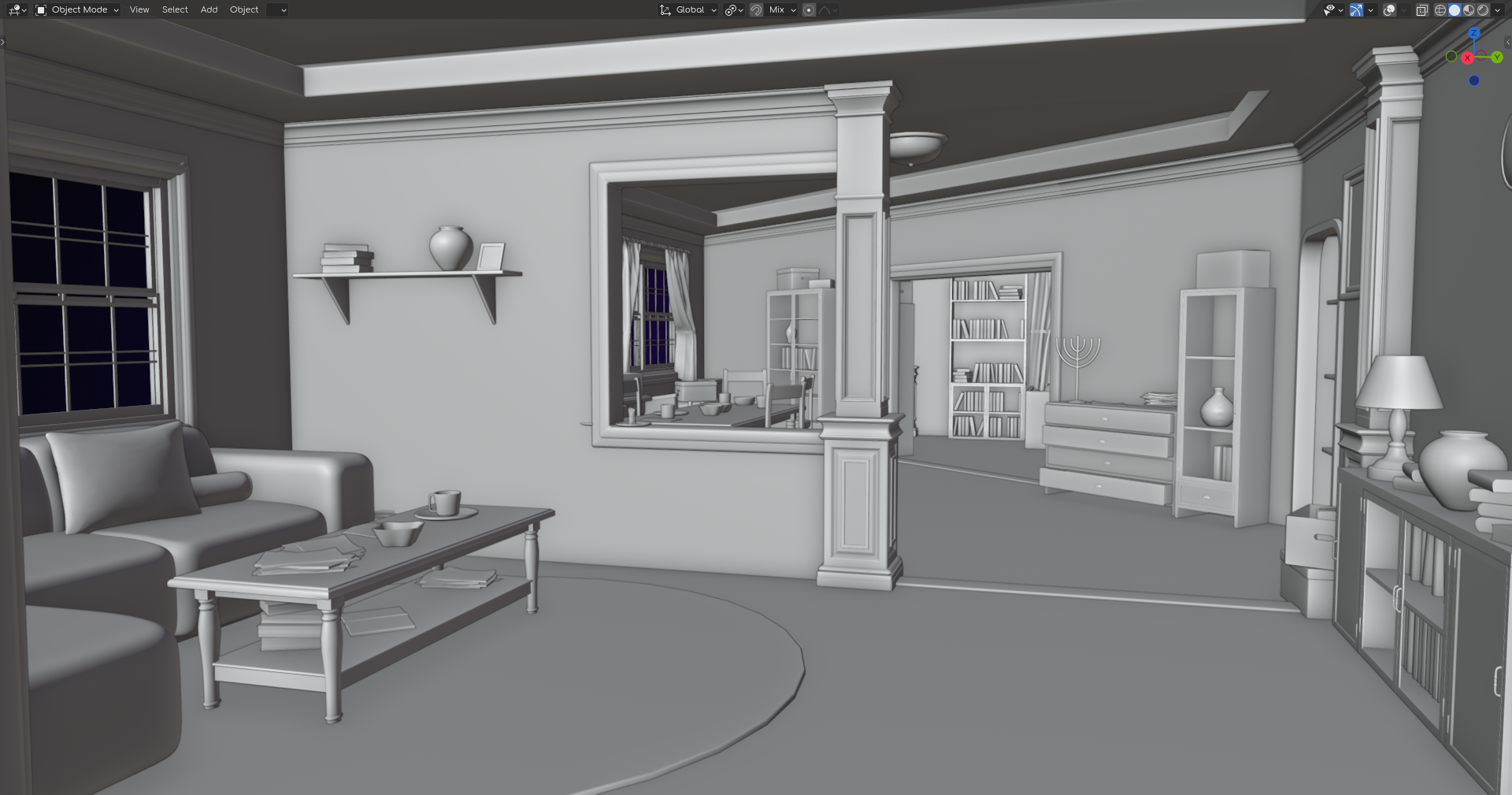
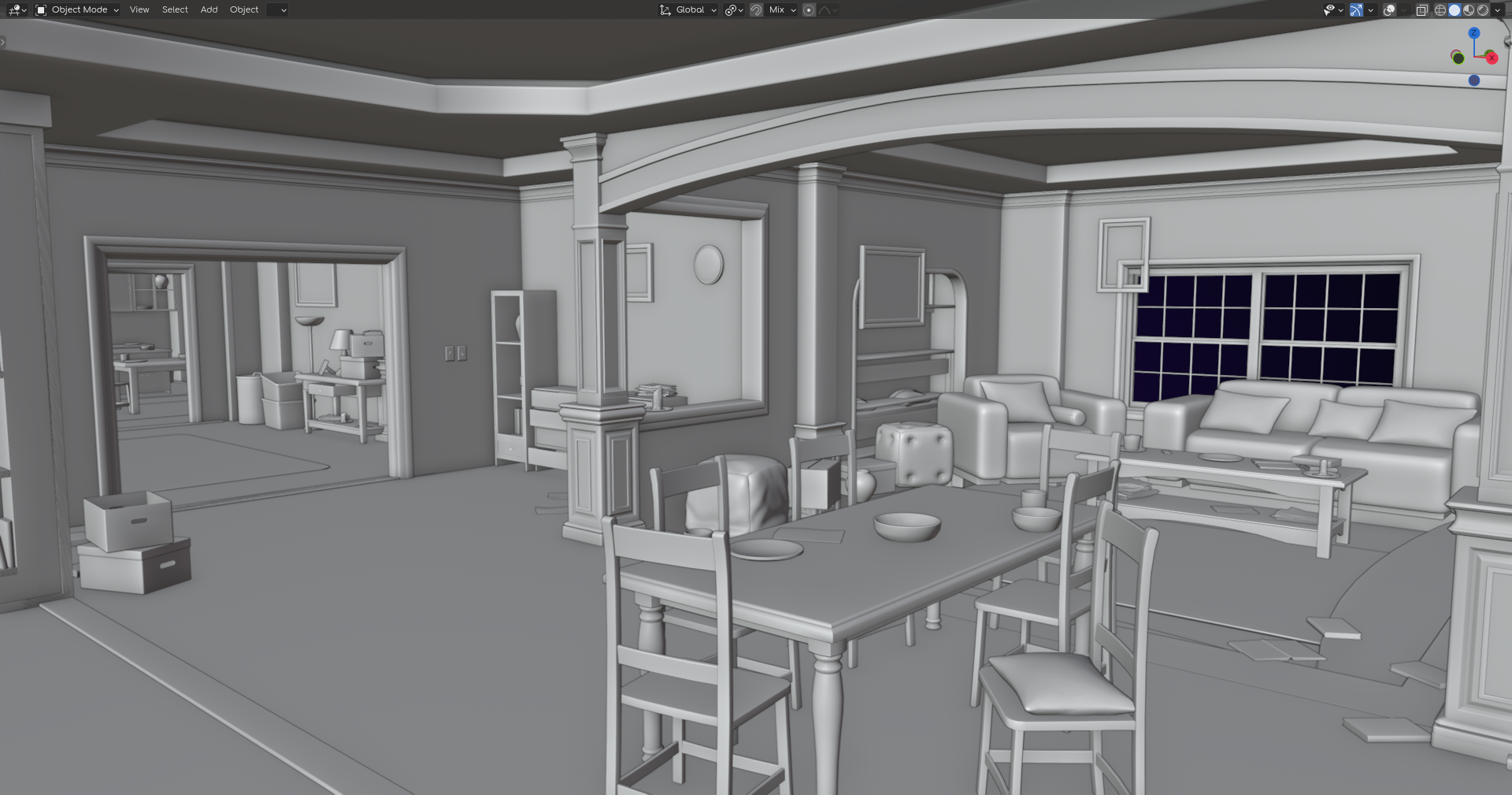
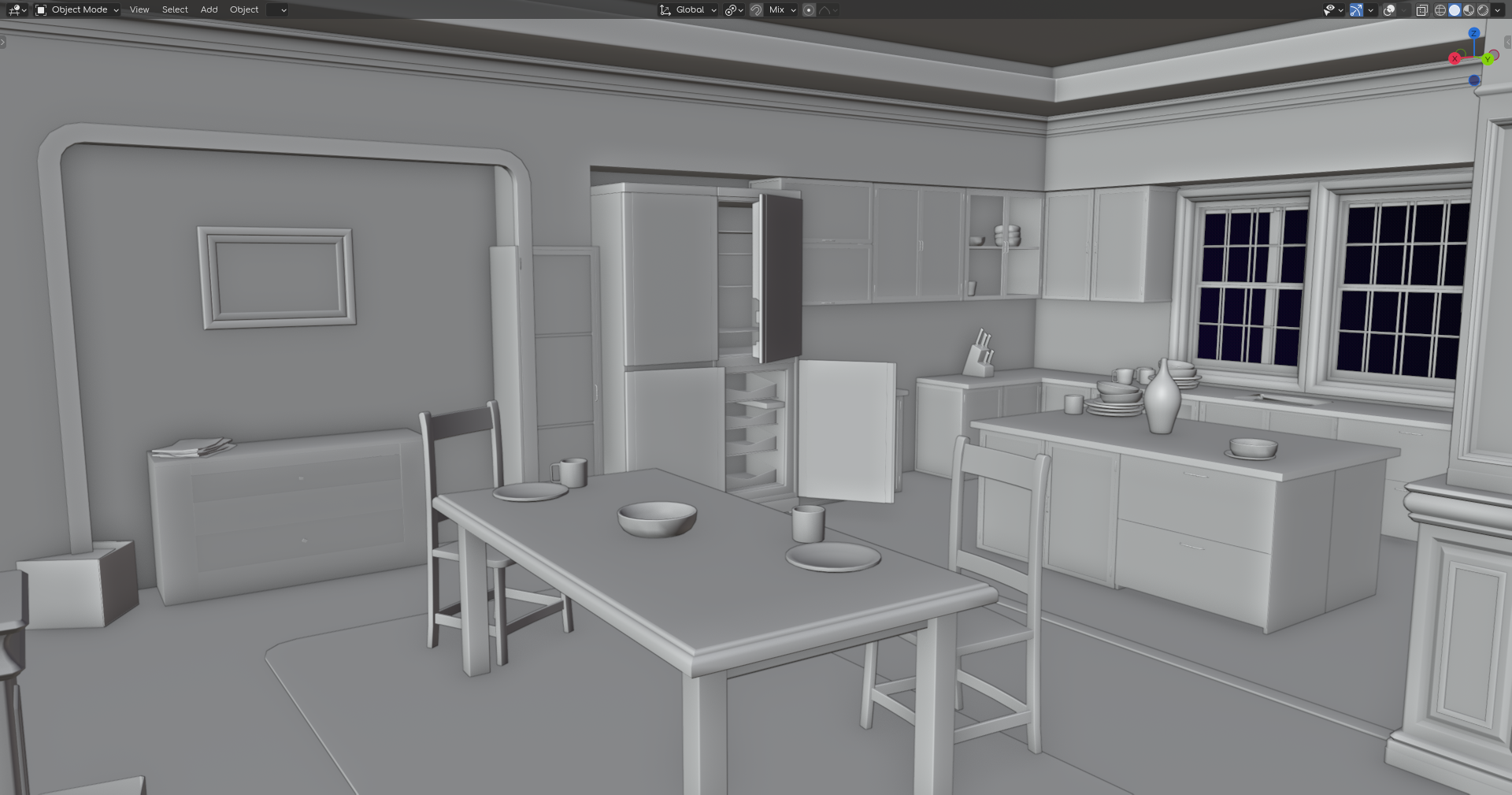
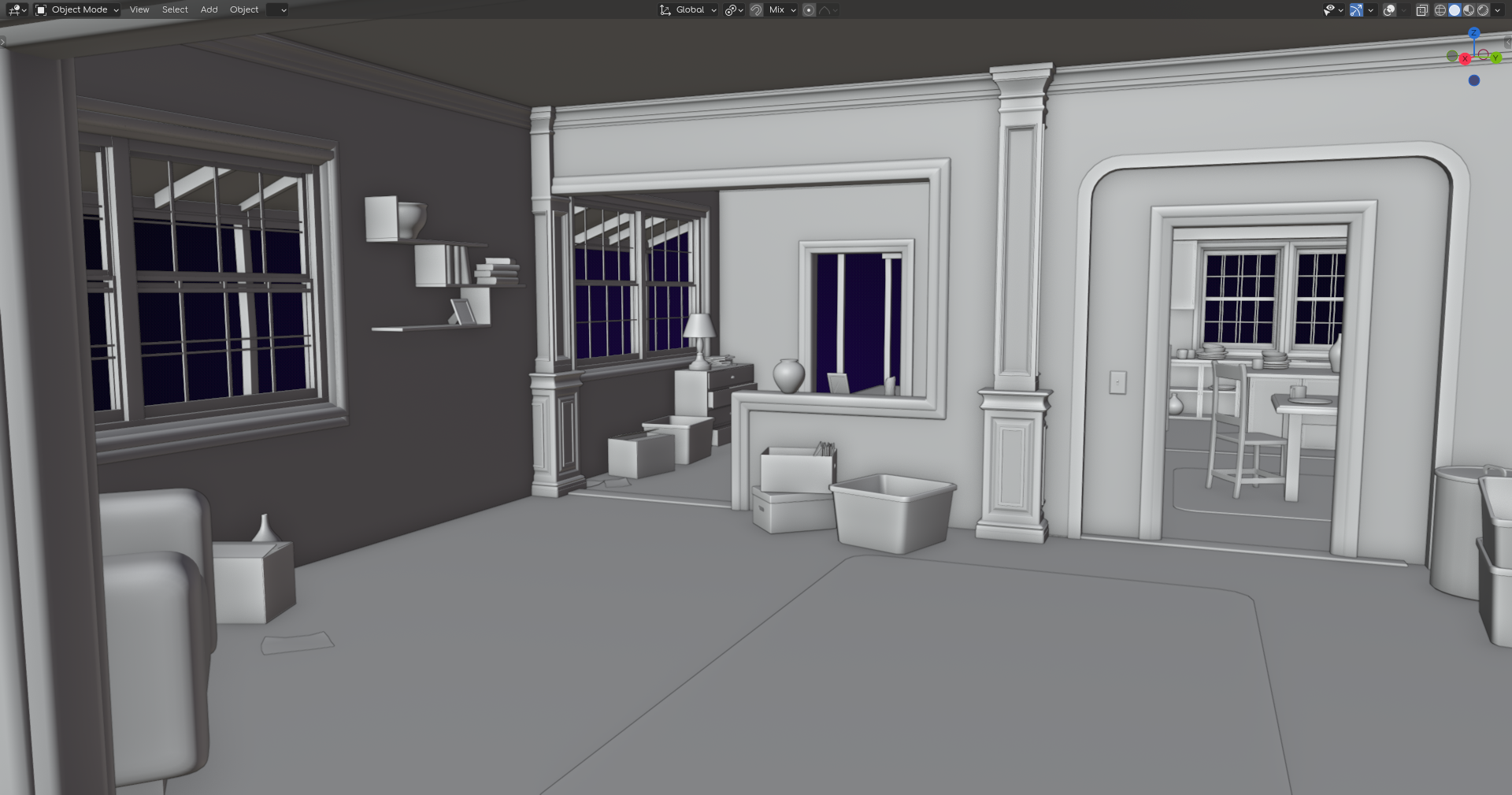
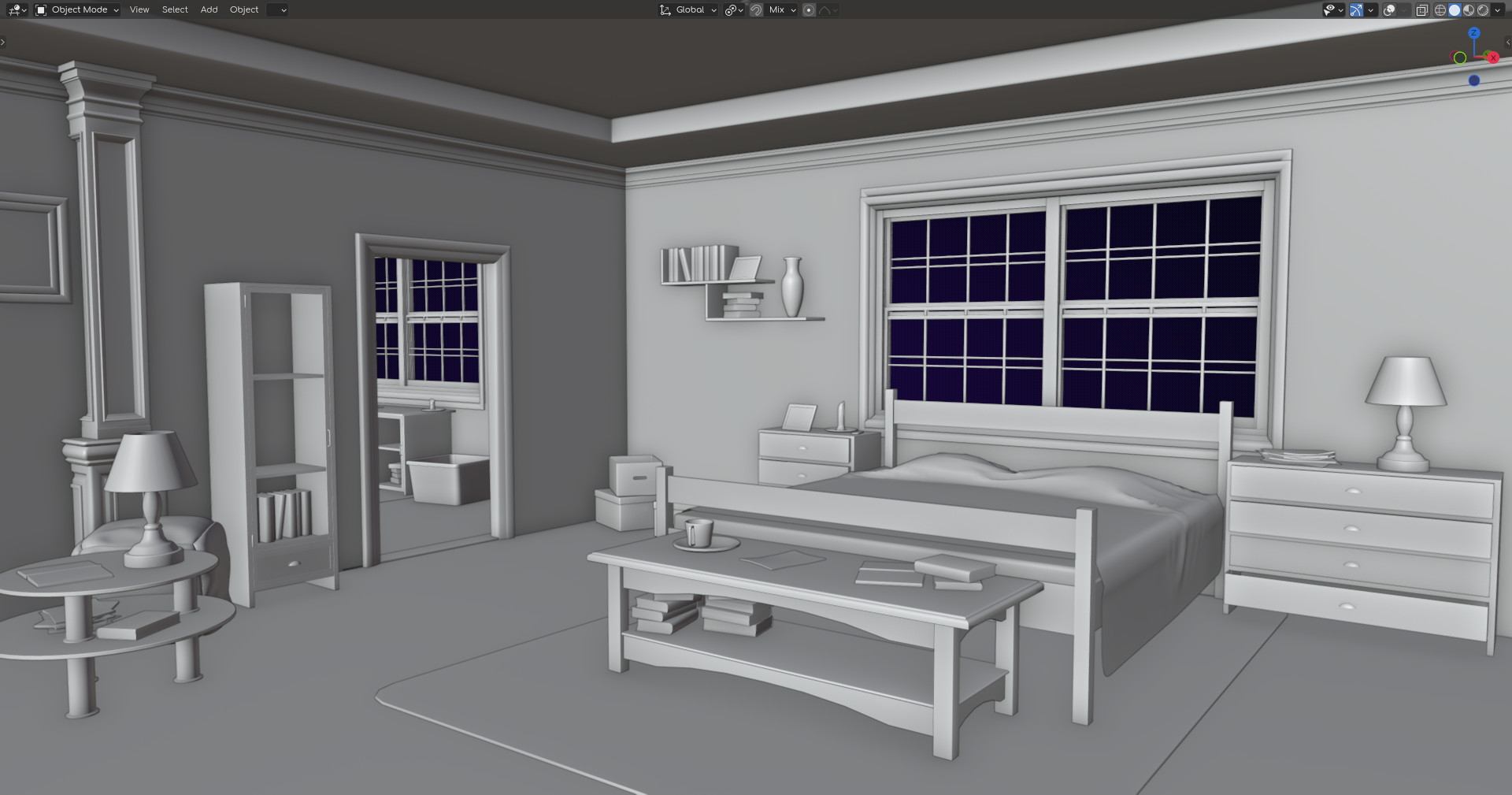
Since the project is quite ambitious and I’m still learning, I’ve split it into three main parts: first floor, second floor, and exterior. I completed the blockout in Blender and I'm currently transferring all models to UE5.
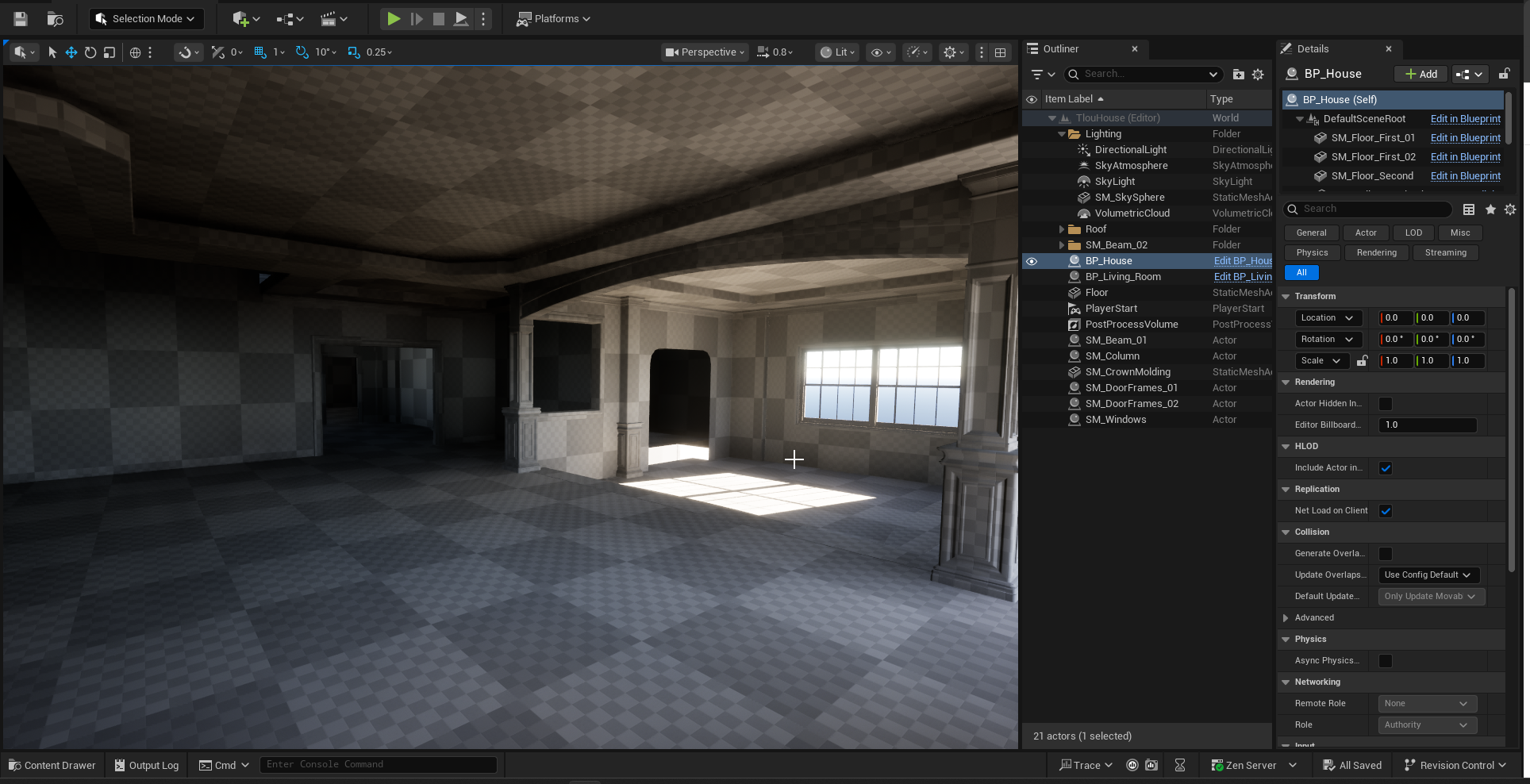
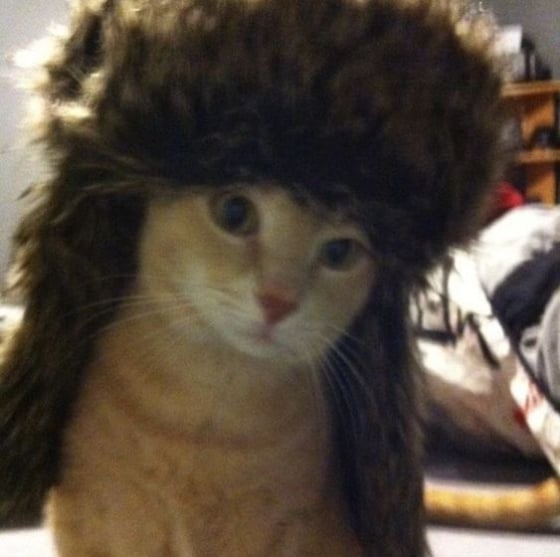
Replies
Back with an update! I’ve finished exporting all models to UE5 and placing them in the scene. I also fixed the scale of the walls and door frames. Still exploring ideas for space blocking and filling empty areas to make scene navigation more engaging.
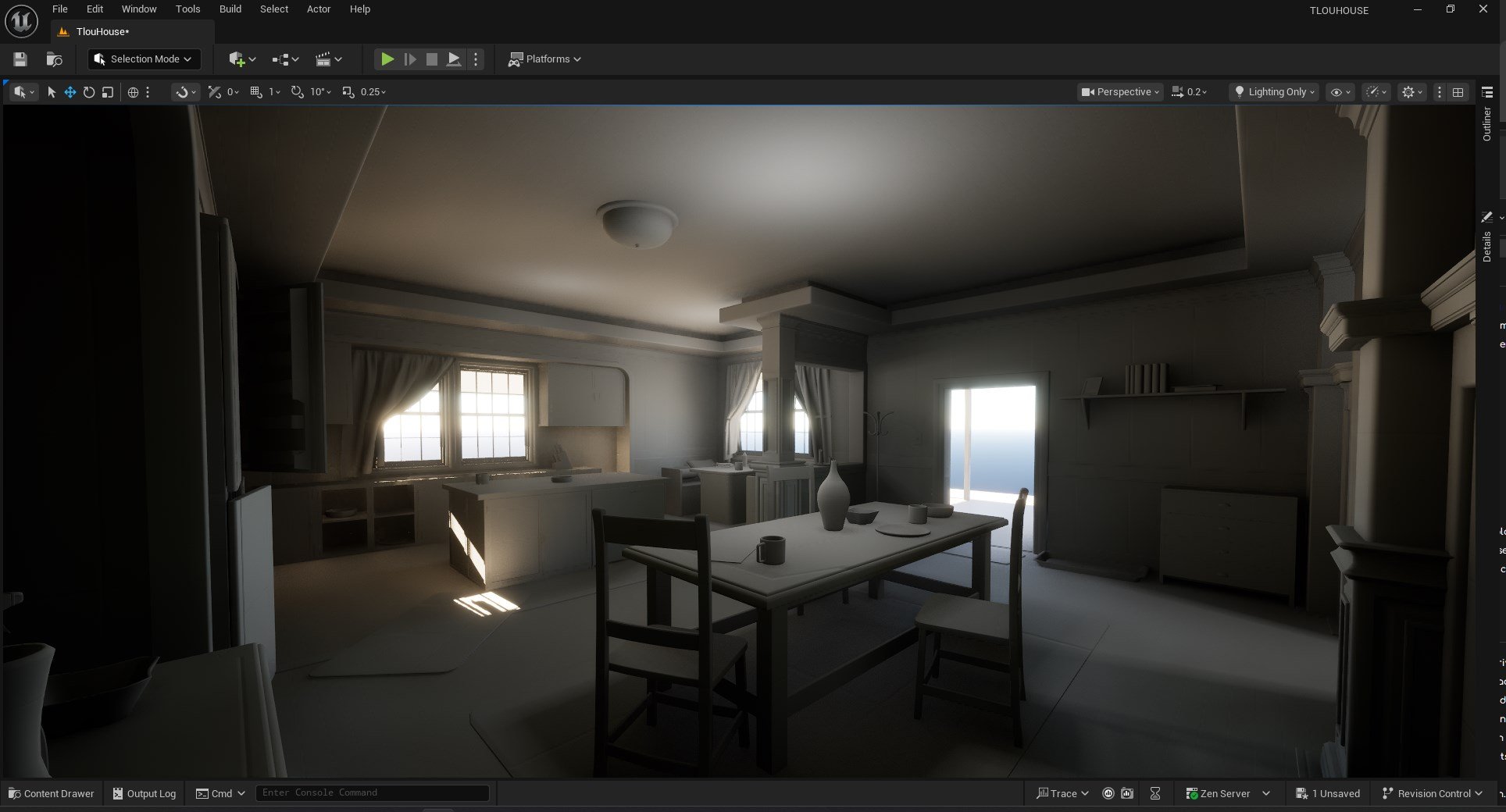
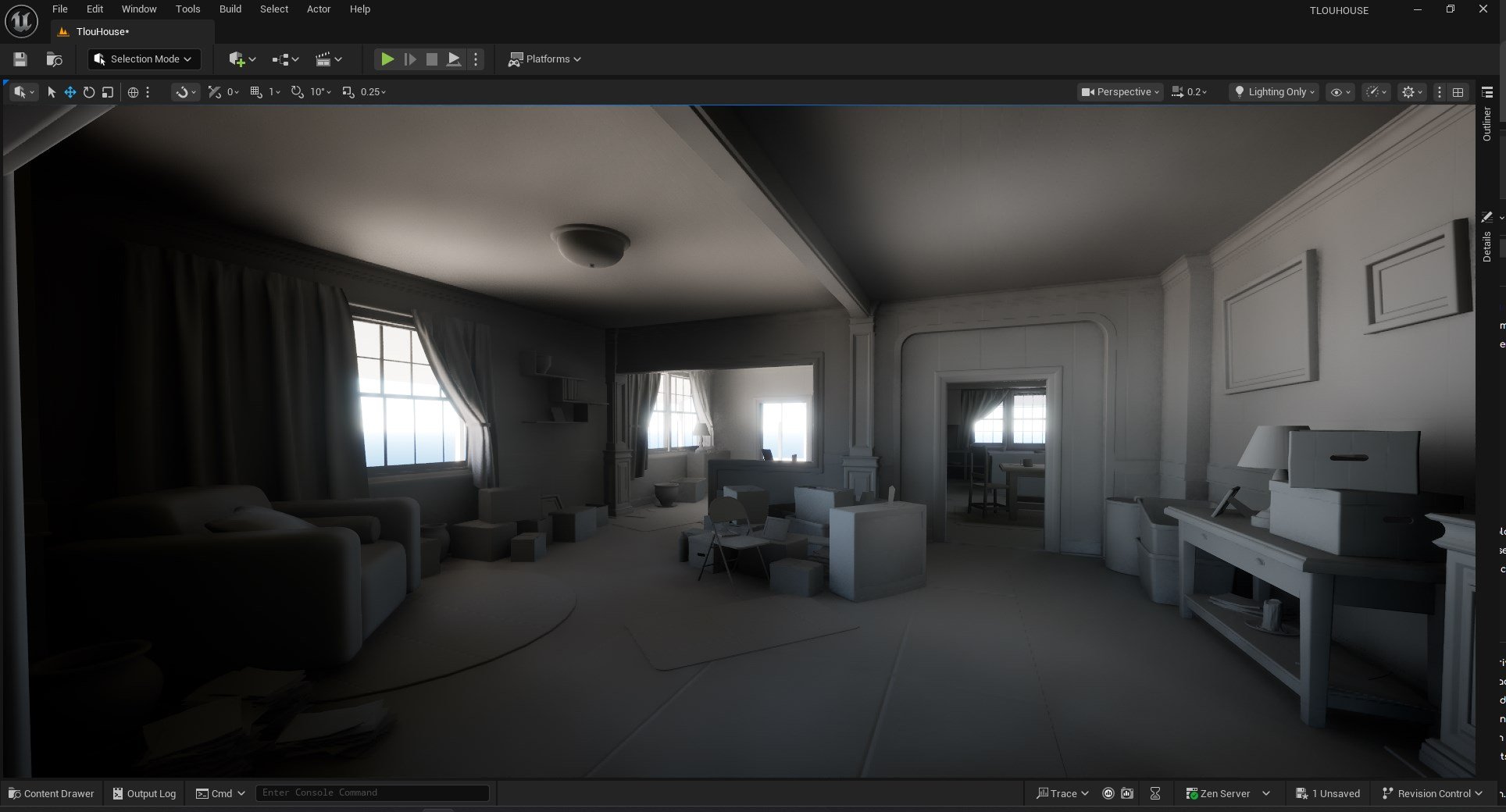

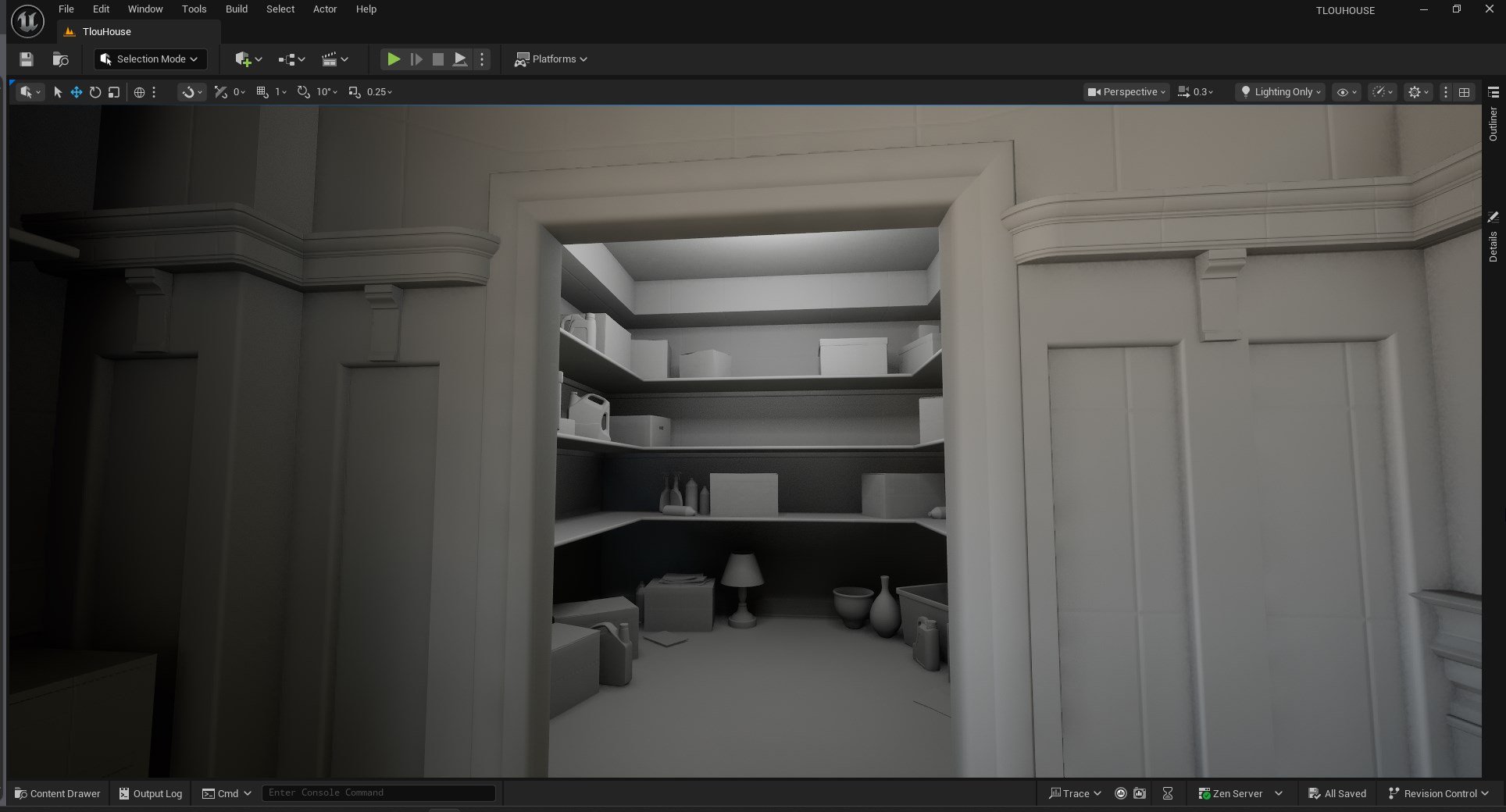
I’ve finally figured out a proper and convenient way to import instanced models from Blender to UE5, so they can later be converted to instances inside Unreal.
I also started collecting references for props and textures. Did a speedrun through RE7 and RE8 to grab screenshots for inspiration.
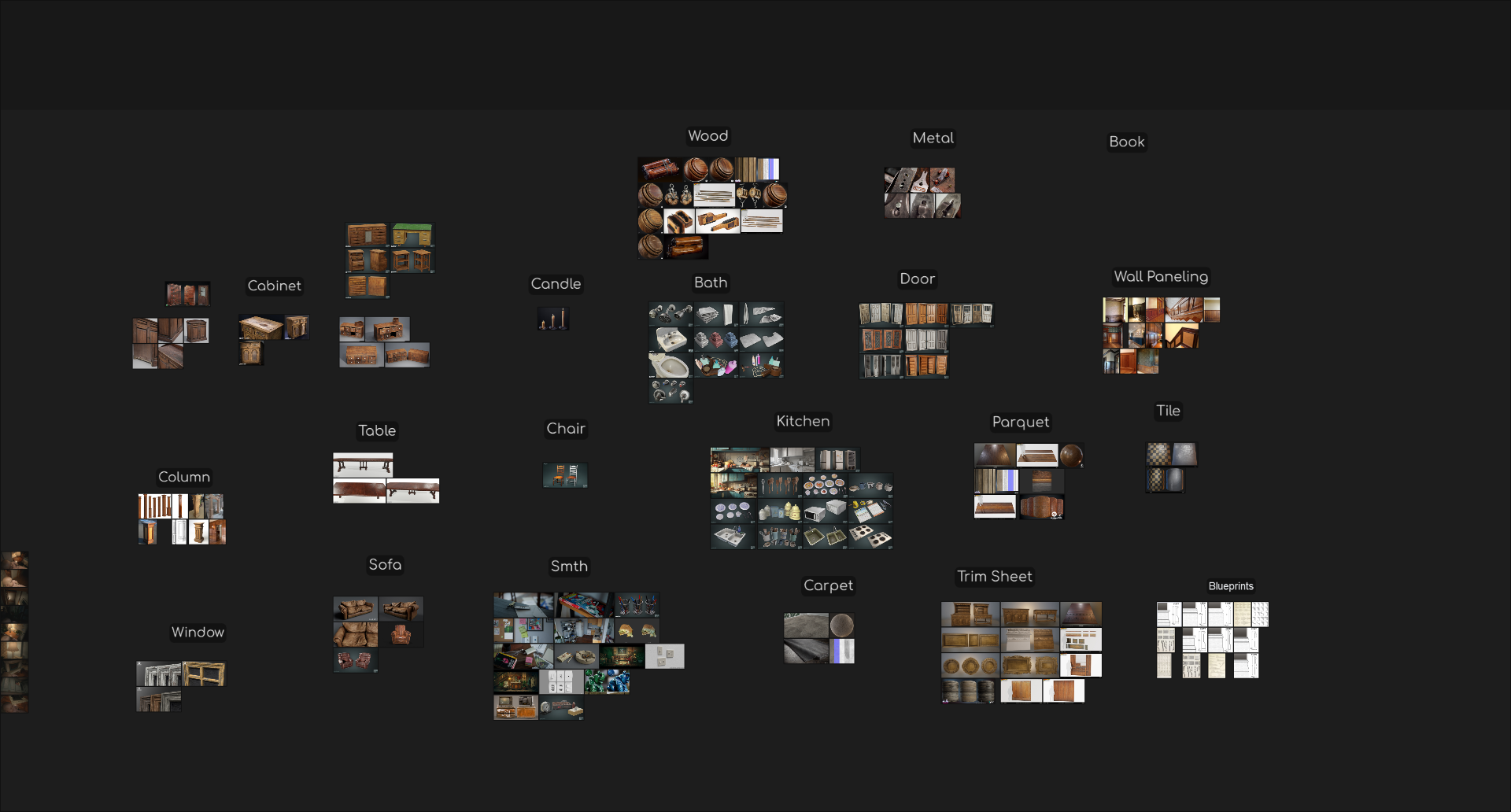
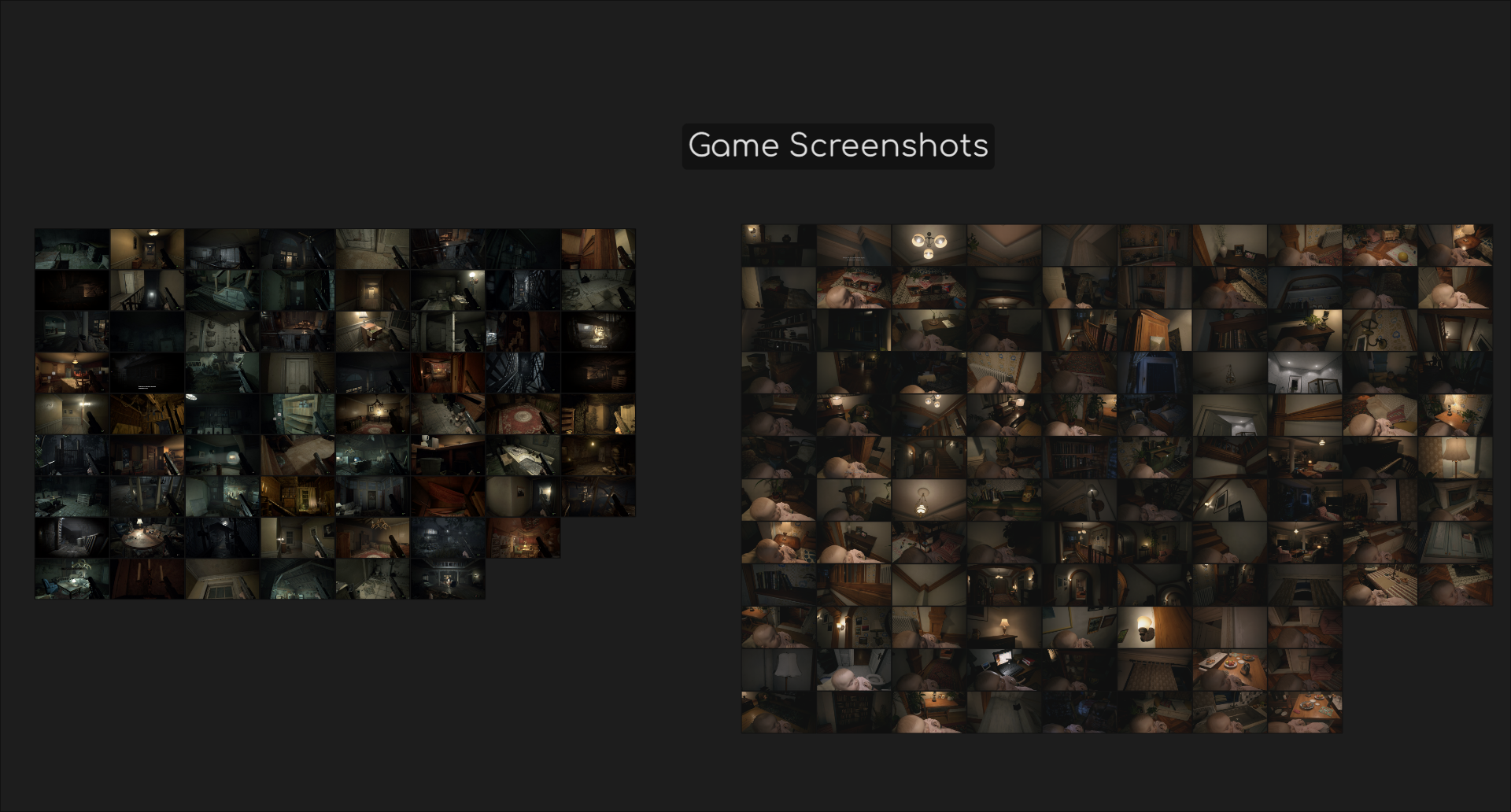
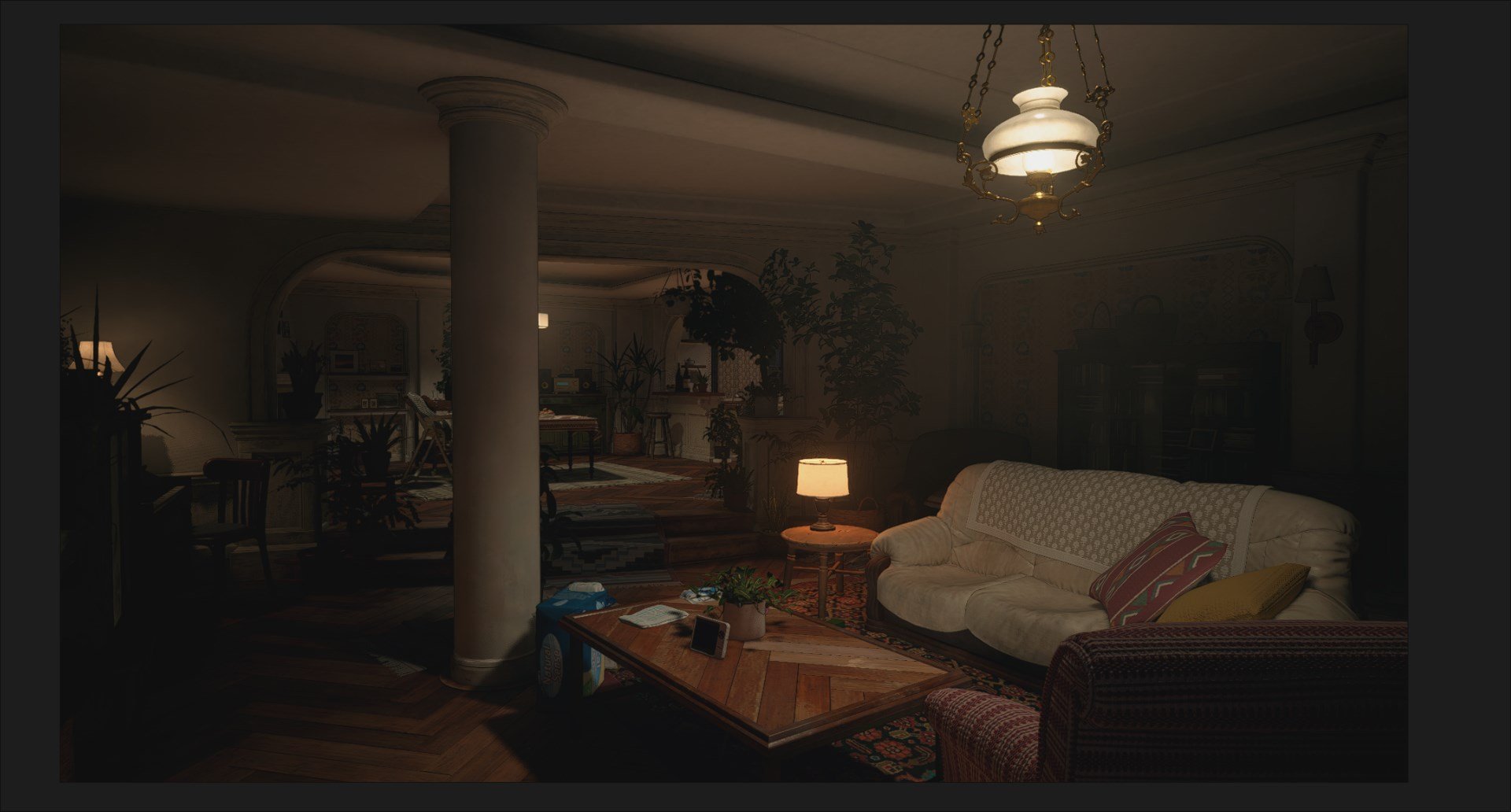
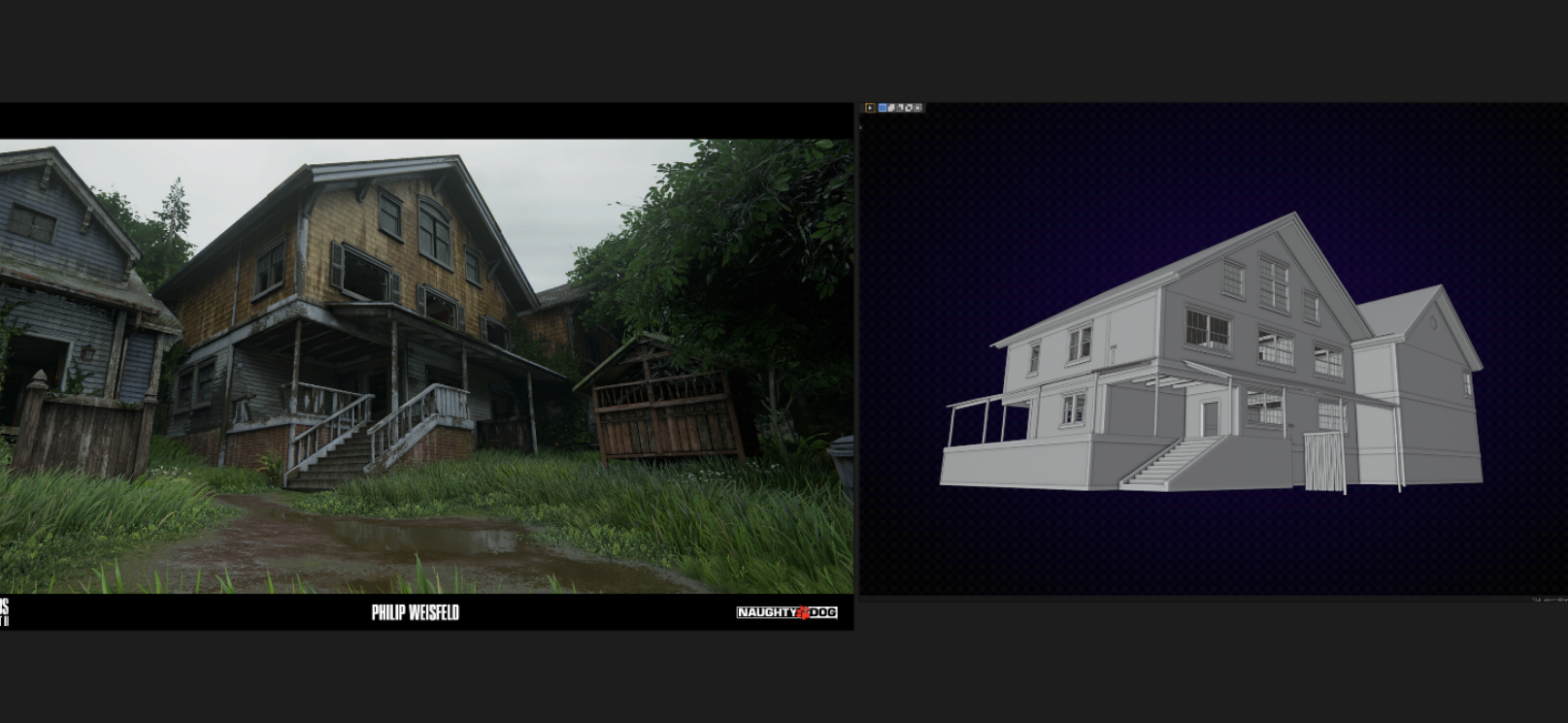
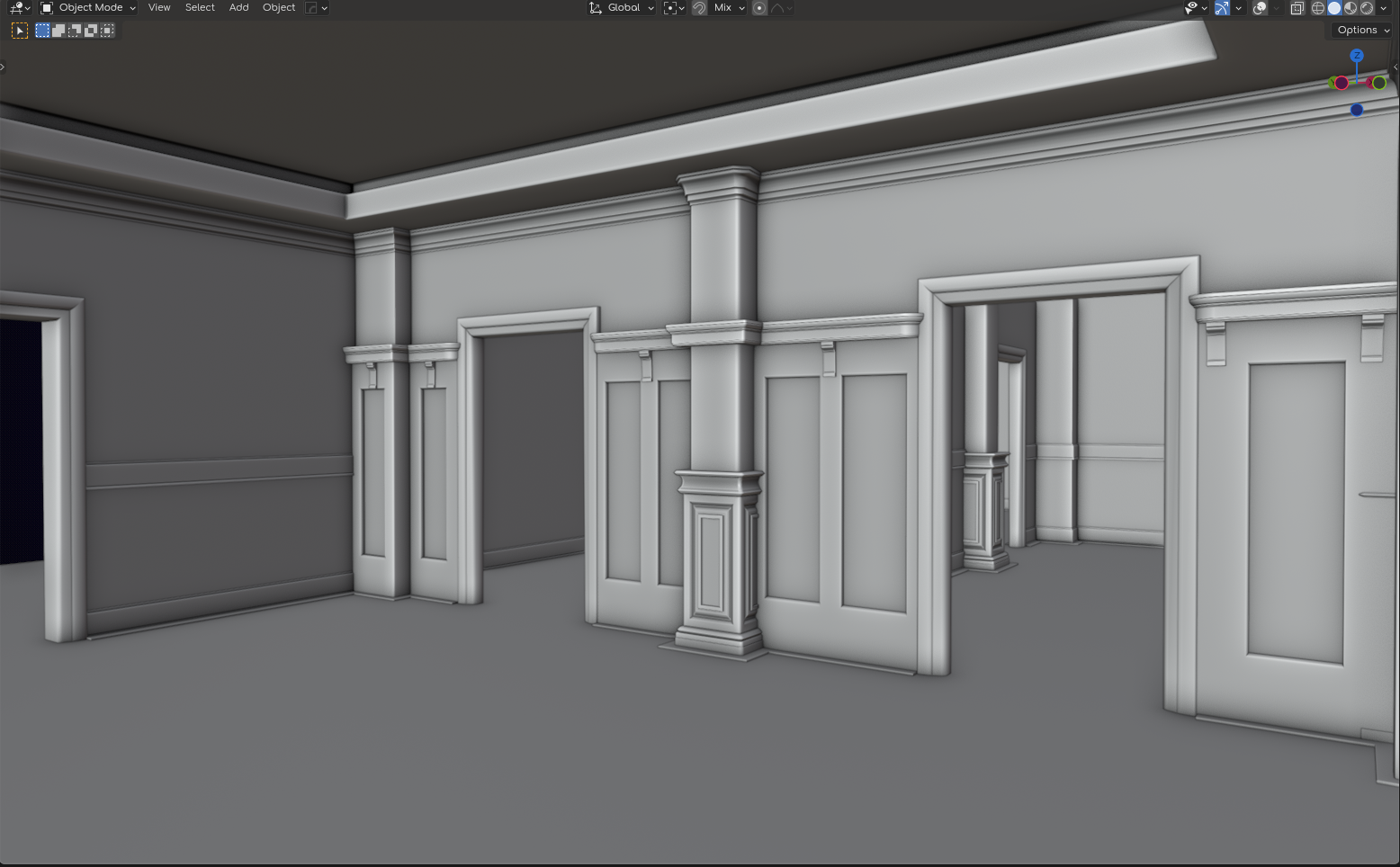
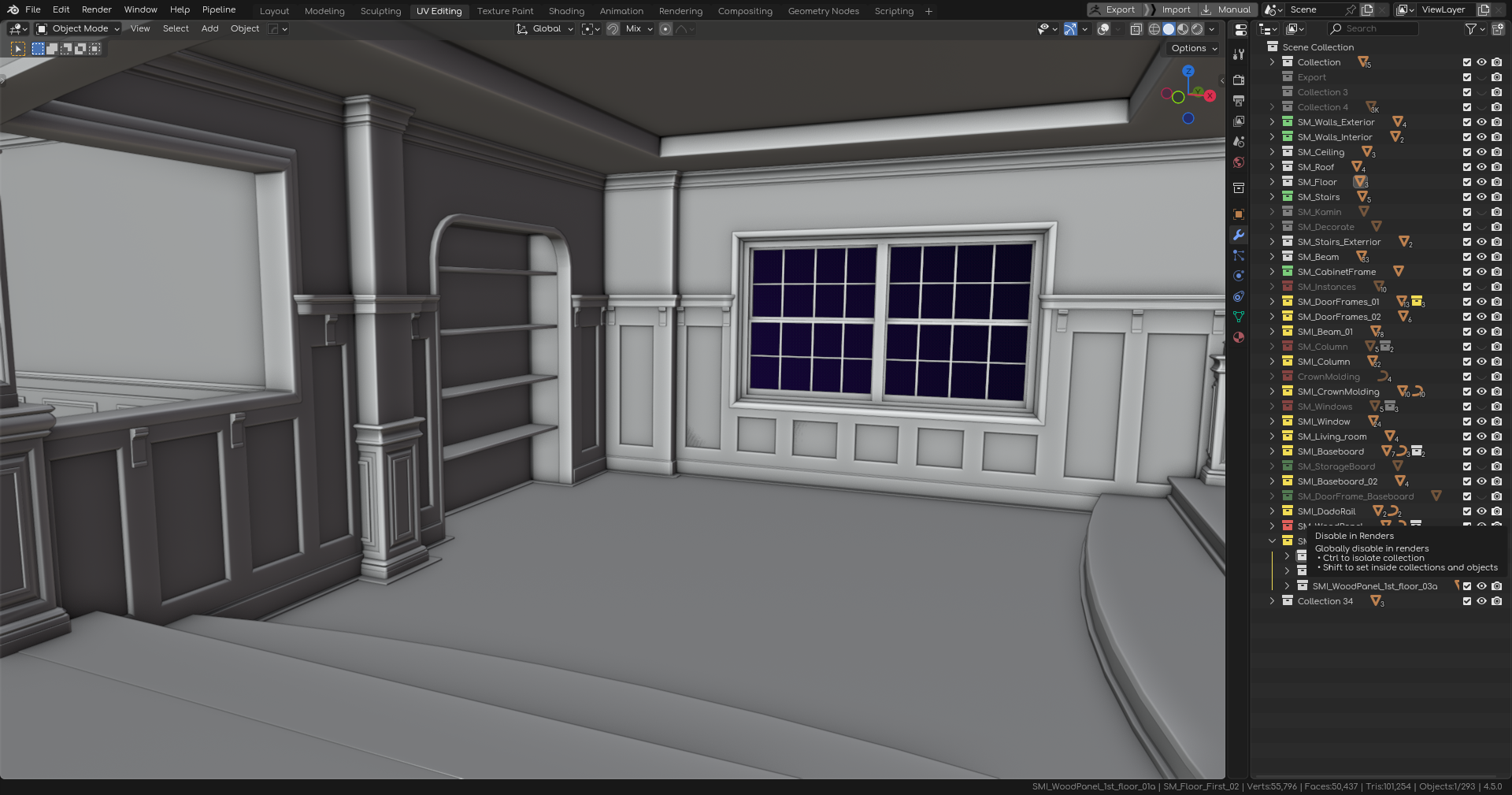
Here’s a scene from RE8 that I’m using as a reference for the interior
and here’s a house from TLOU2 that inspired the exterior
As for new content — I’ve modeled the baseboard, cornice, dado rail, and wall paneling
Back again!
Most of the work over the last 4 days happened on paper, not in-engine. I put together a rough prop list to populate the scene — about 50 core items, but many of them will have variations (like different tables and chairs). So yeah, I’ve basically signed myself up for a fun little adventure of modeling 150+ unique assets. Thankfully, most of them are pretty simple and small in shape and material.
As for in-engine progress — I identified some boring/empty areas and added points of interest. For example, there's now a wardrobe space right near the entrance
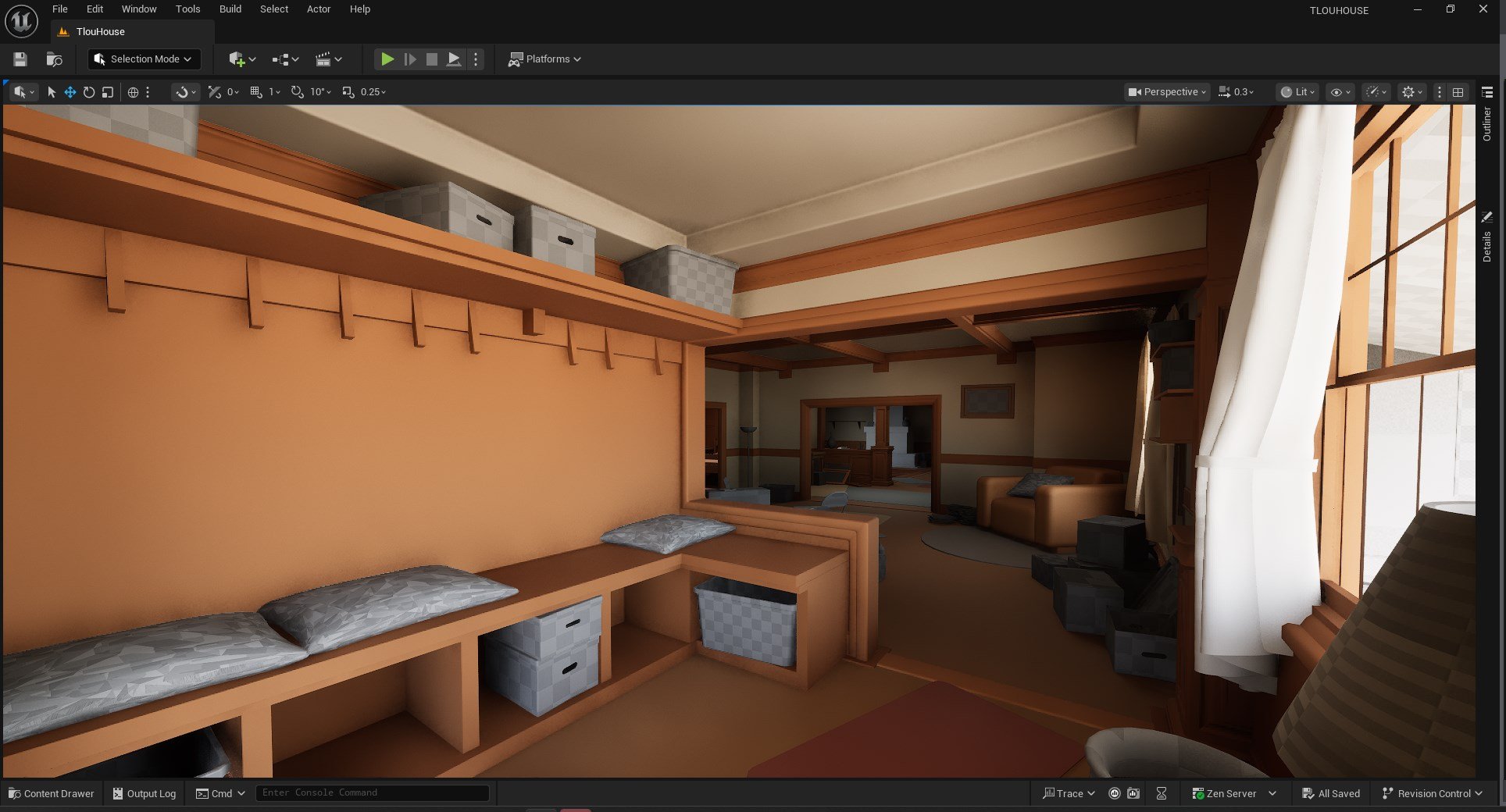
Some marked spots are still empty though — haven’t found a nice and logical idea for them yet.
I also started filling in the last room on the first floor — the bedroom
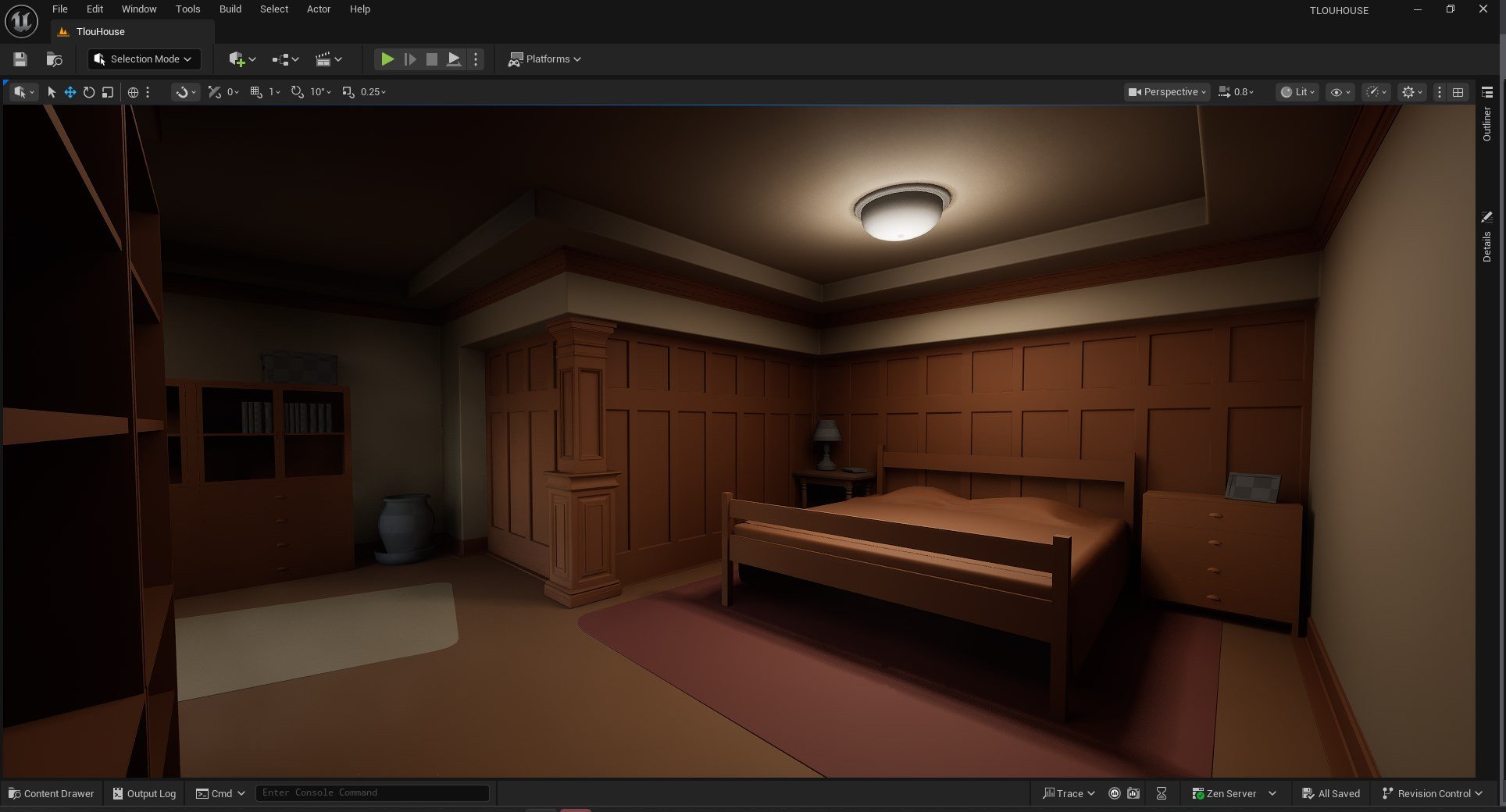
And as you can see, I threw some materials on the meshes to get a rough idea of the scene’s color palette.
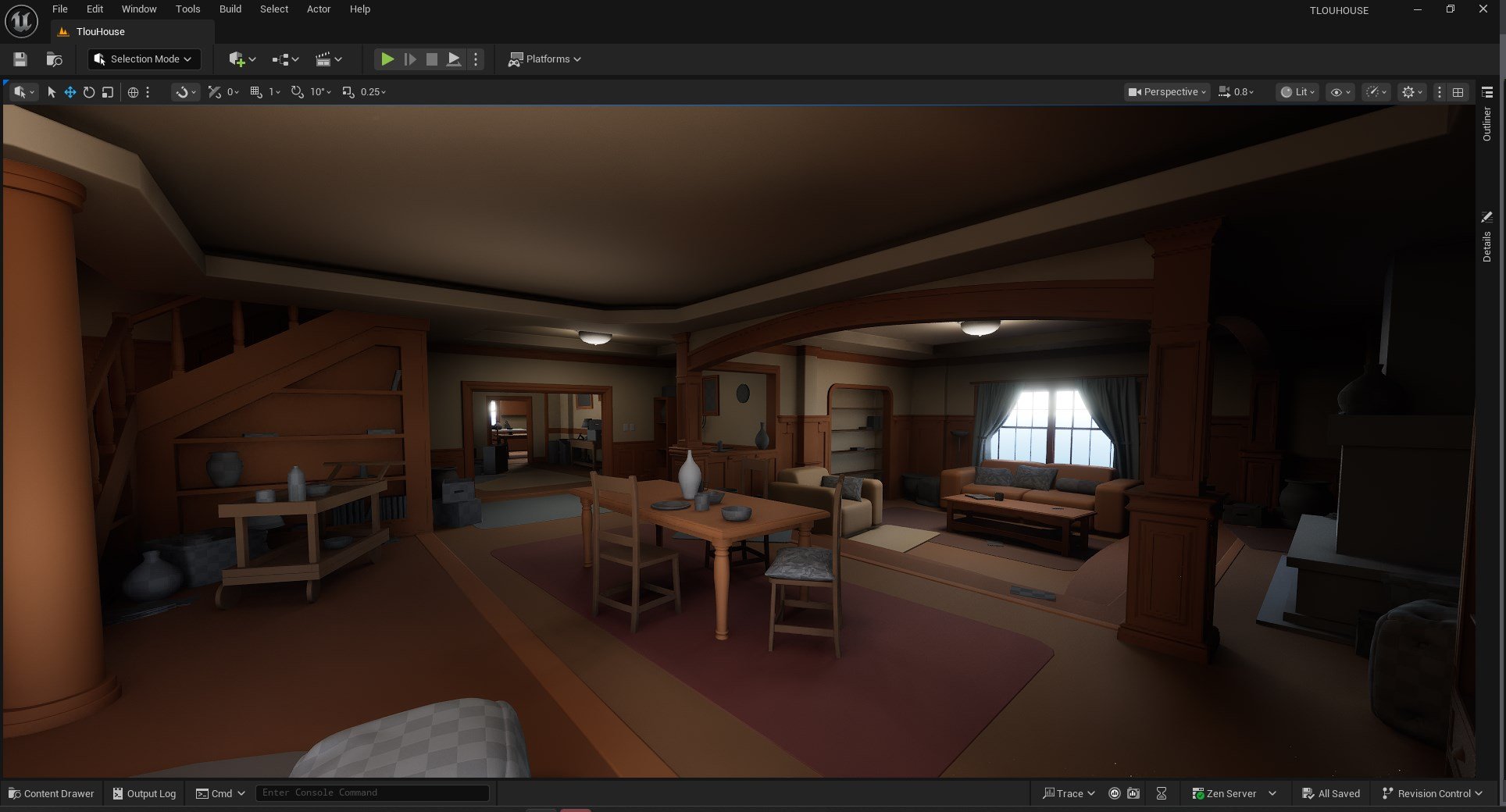
Next up: time to dive into prop modeling. To speed things up, I’ll try to find schematics or solid reference images for each item — the less guessing, the better
Hi everyone! After nearly two months of silence, I'm back. I took an unplanned vacation from 3D — hospital with pneumonia. My advice to you: don't get hospitalized with pneumonia—it's awful
I've fully recovered now and am ready to share a progress report covering the last 1.5 weeks of work on my project. During this time, I've created numerous models, set up lighting, and drafted a plan for texturing and started working on the second floor
Link to video:
https://jumpshare.com/share/mMIxEeAs202CIHtPoyPT
Really sucks that you got sick with pneumonia, I had that once, not fun. Glad you're doing better now.
This is one very impressive project!